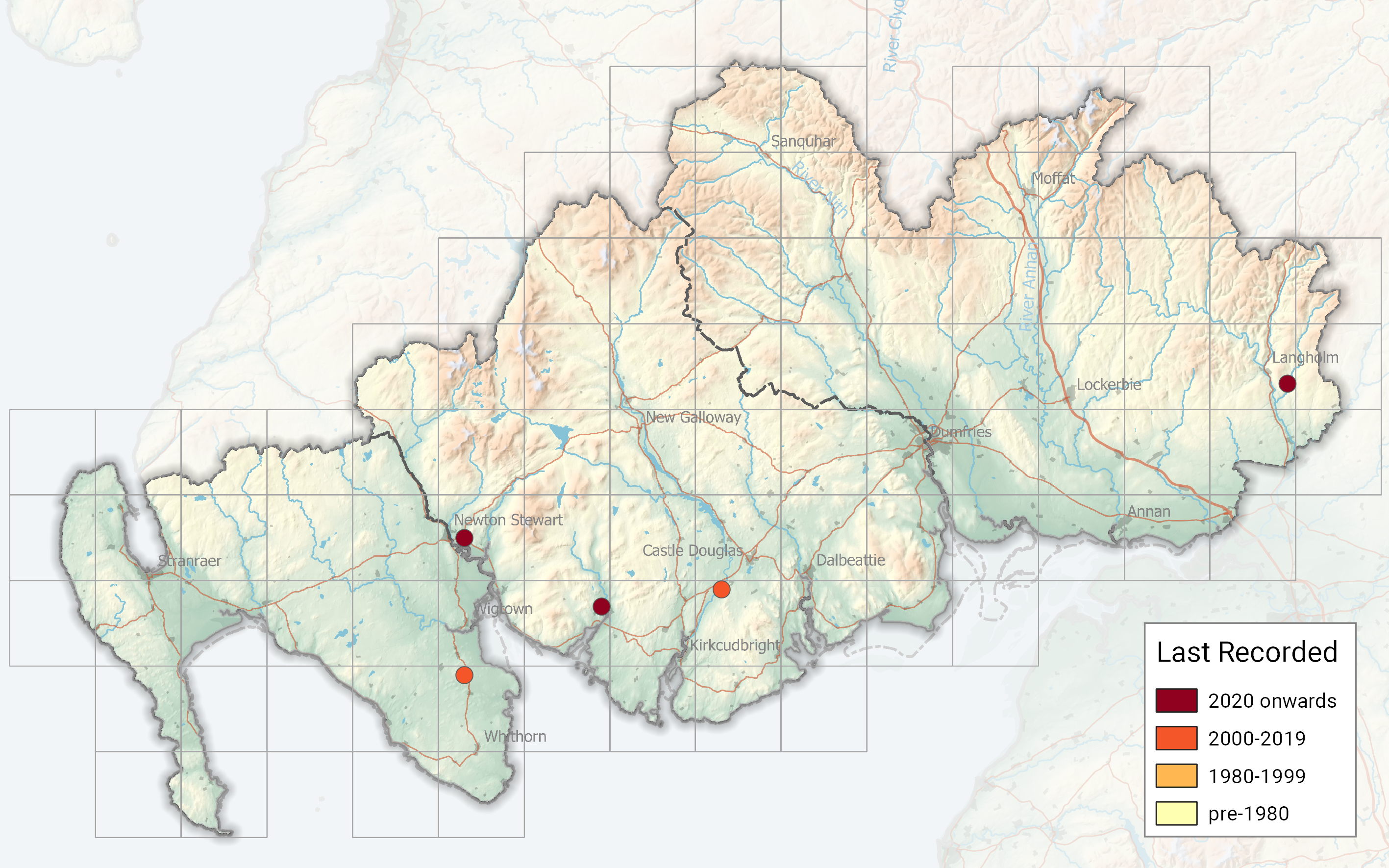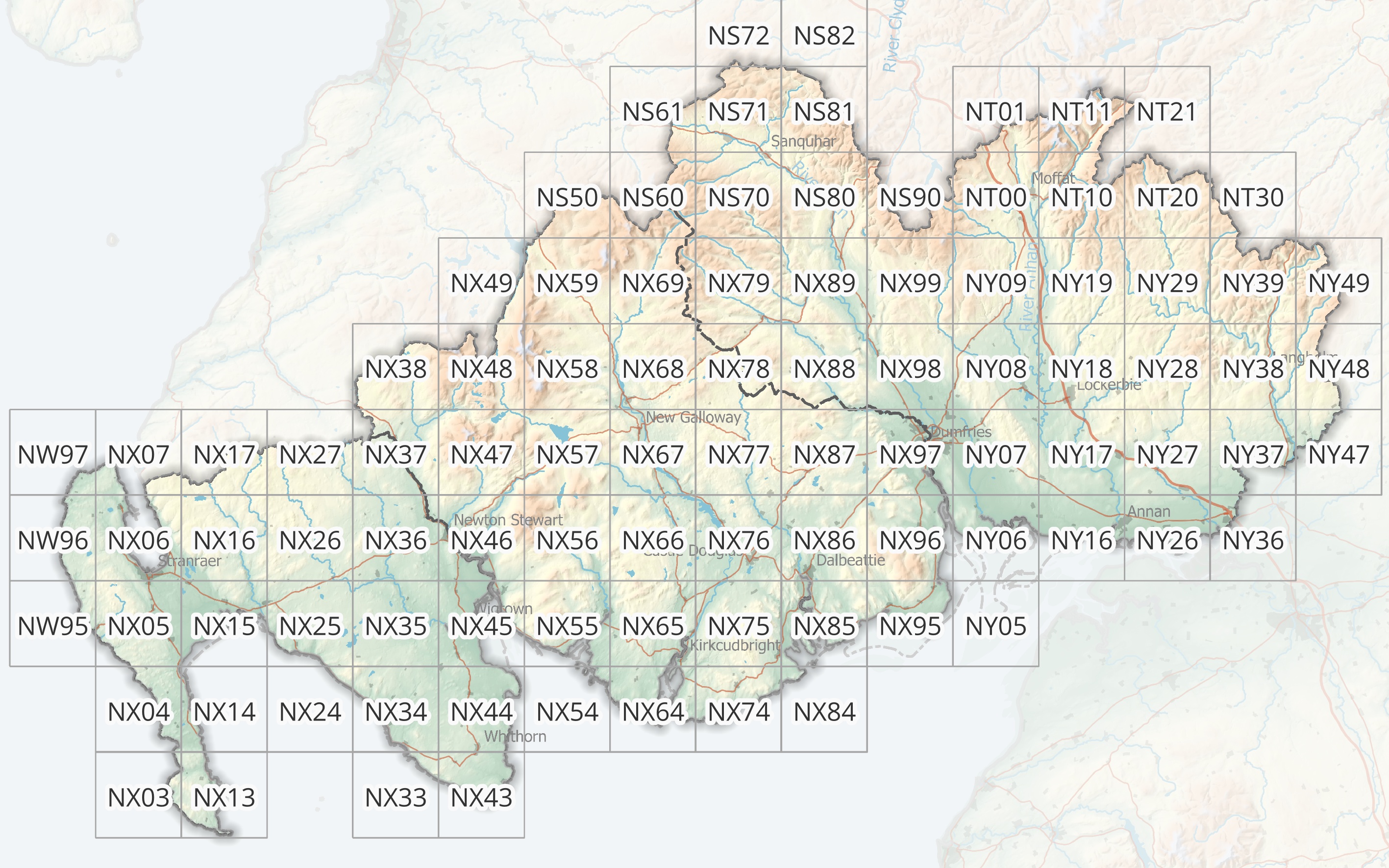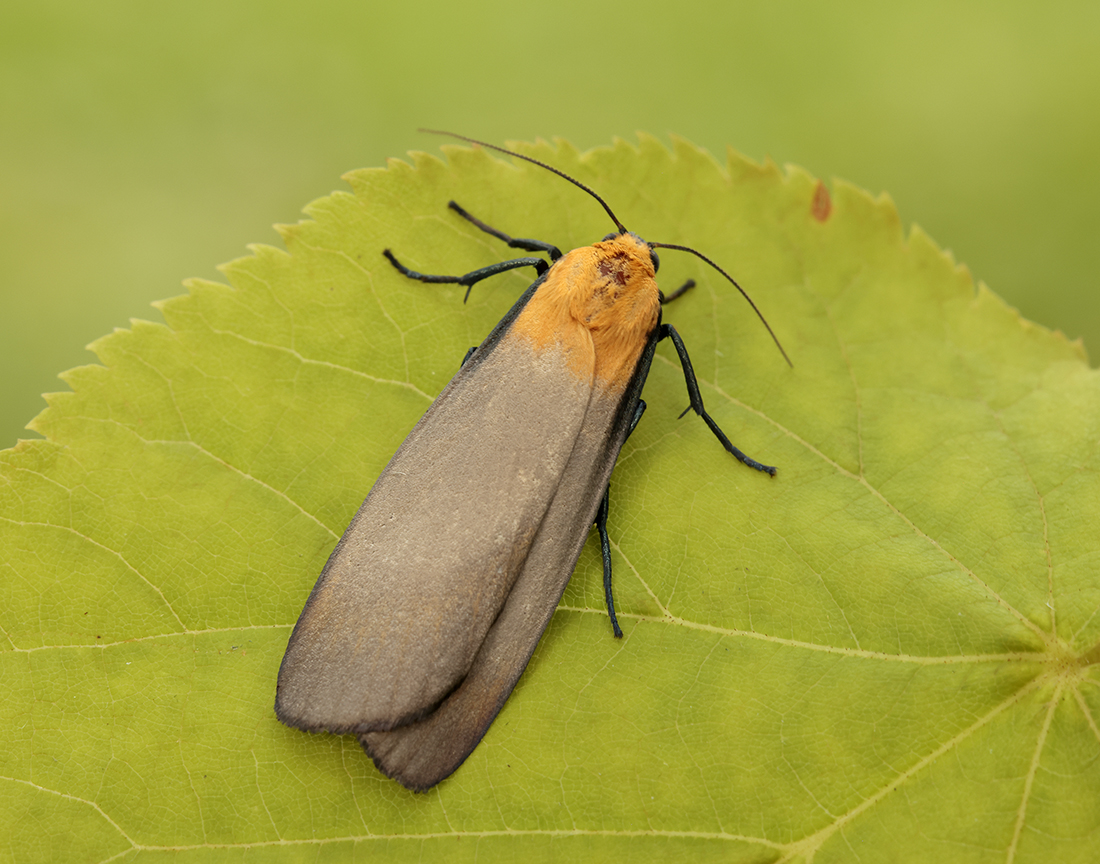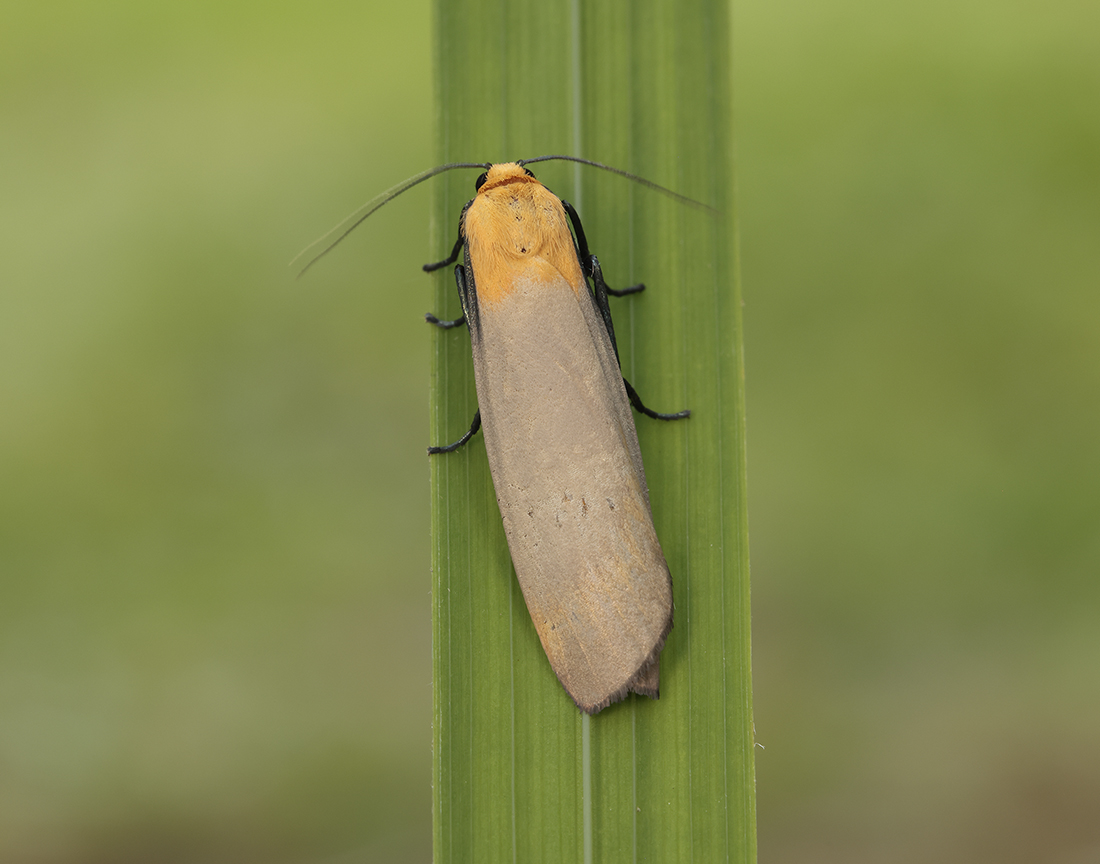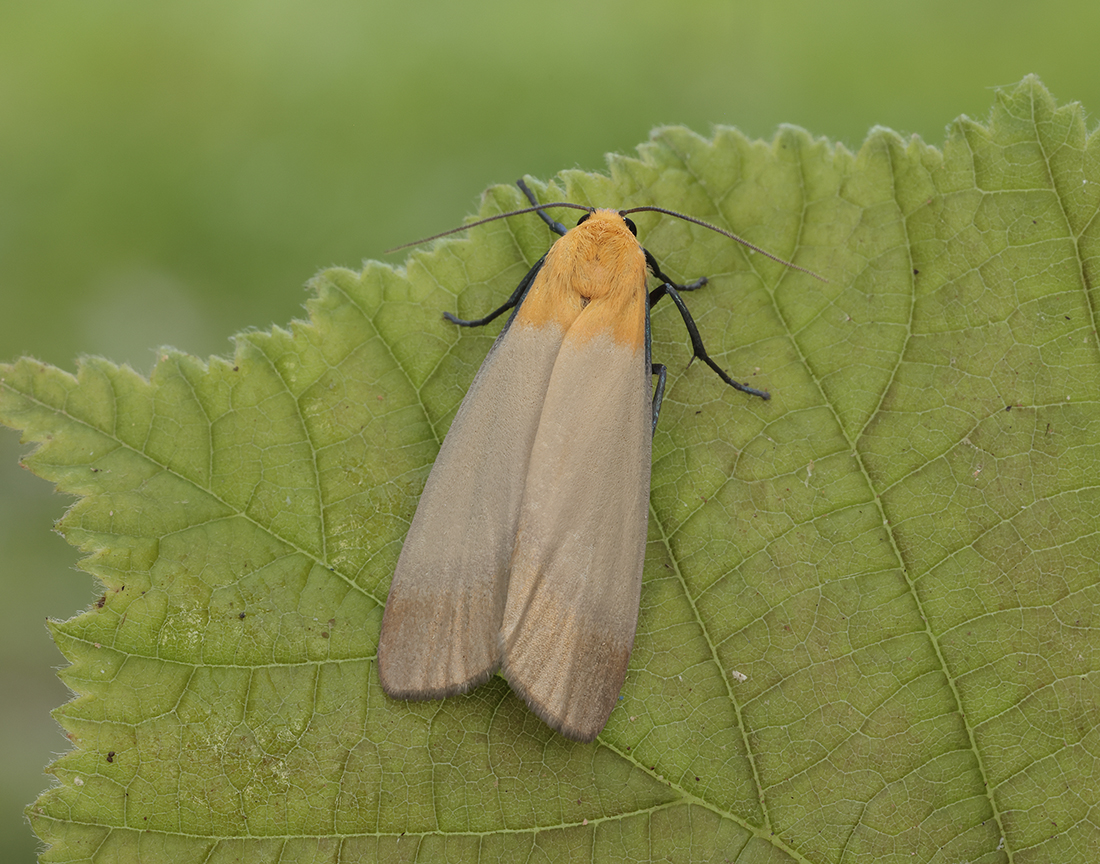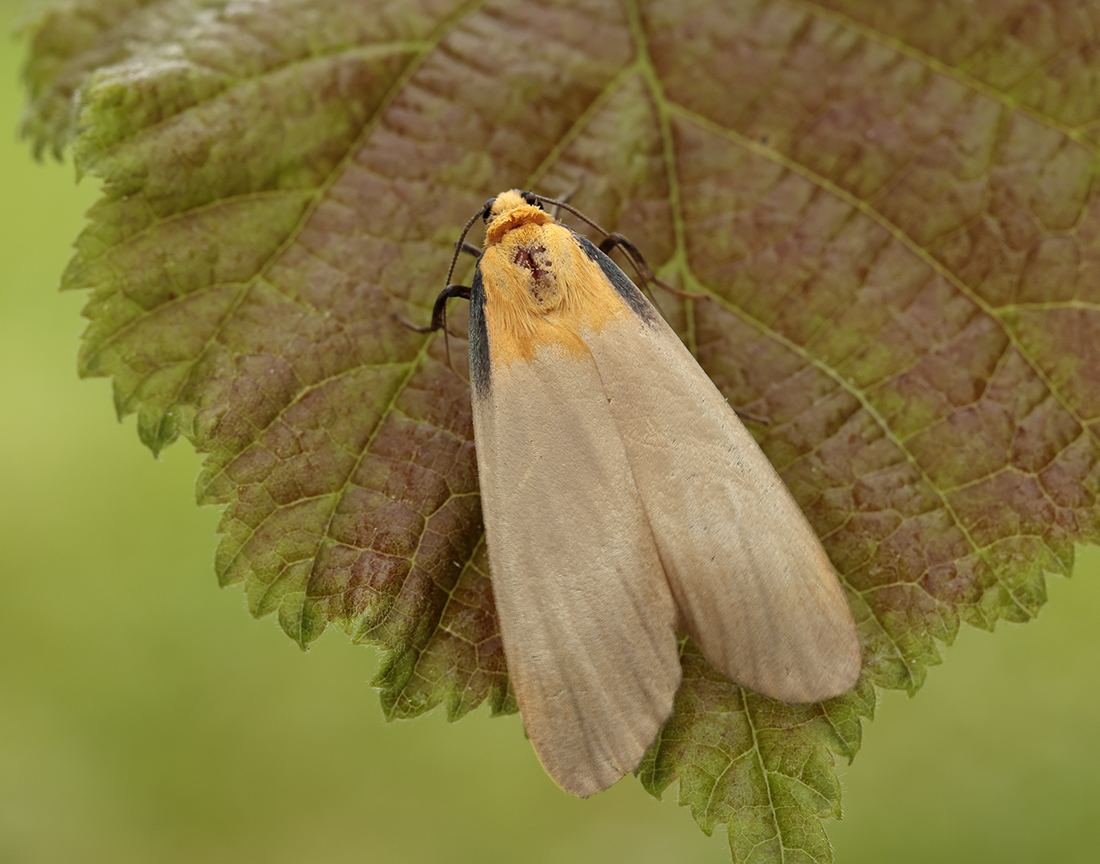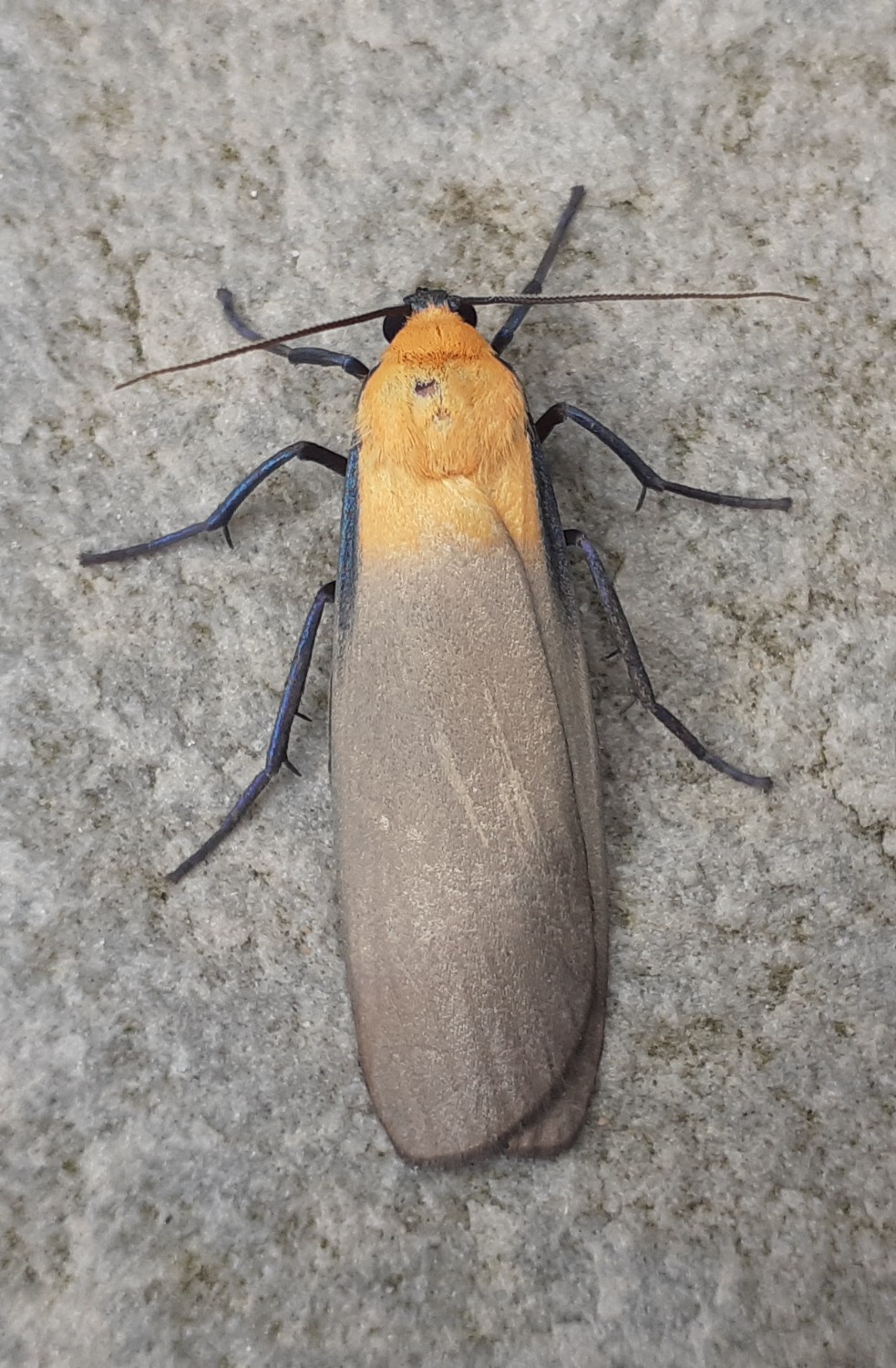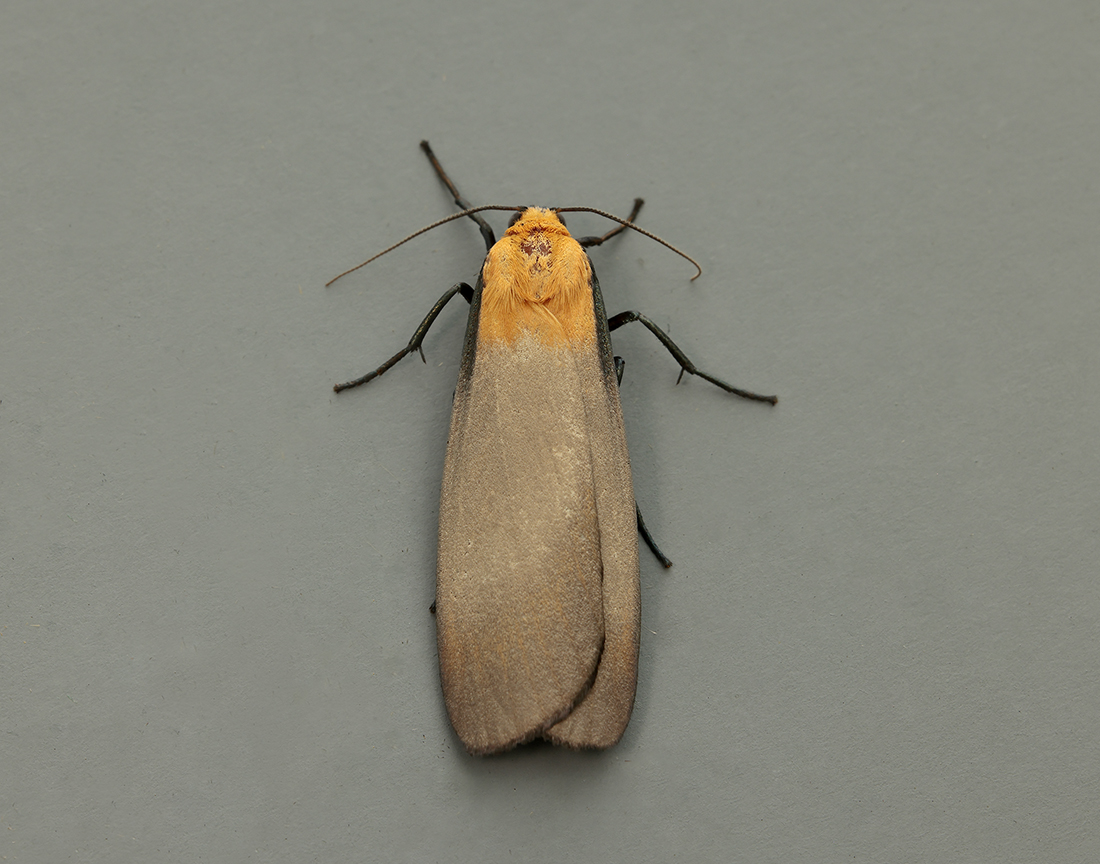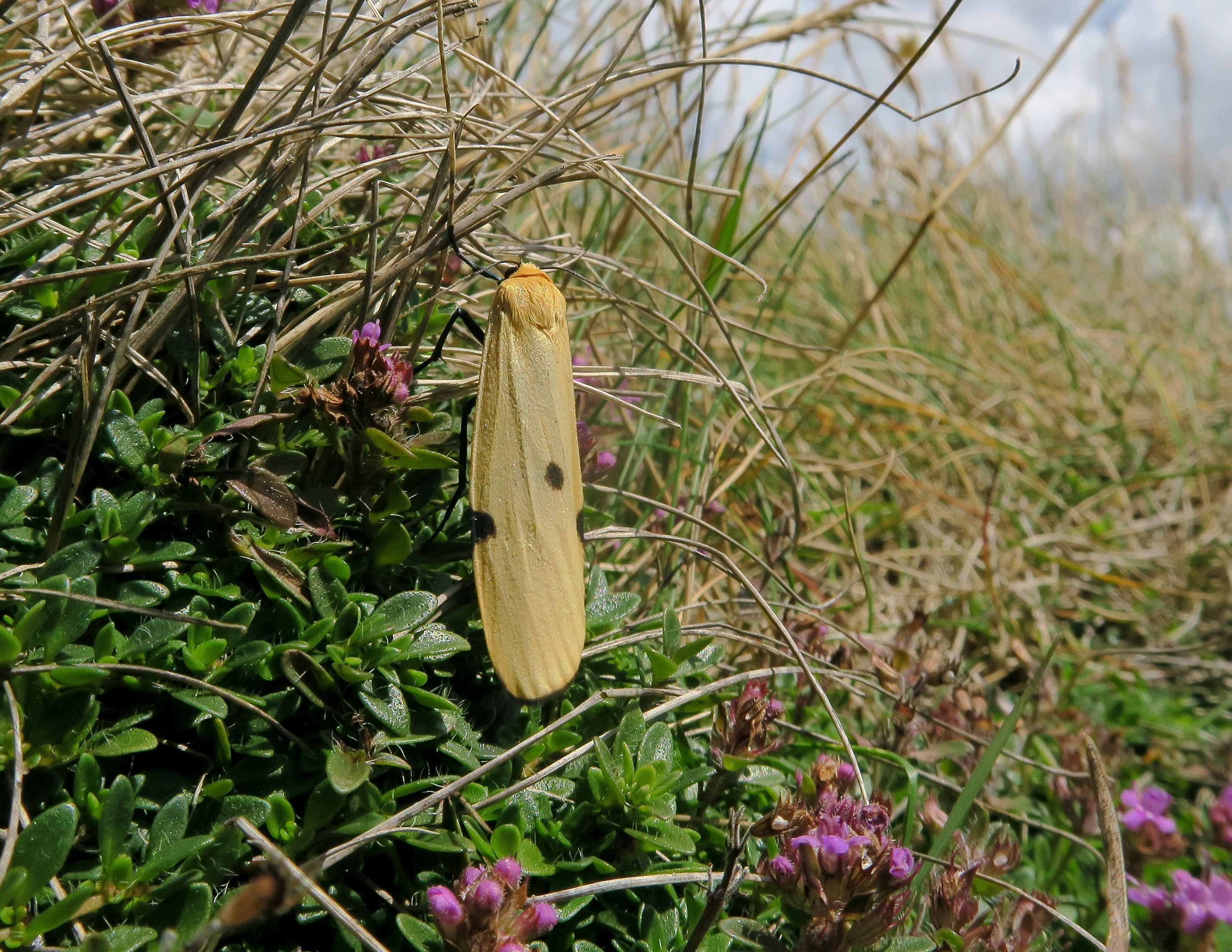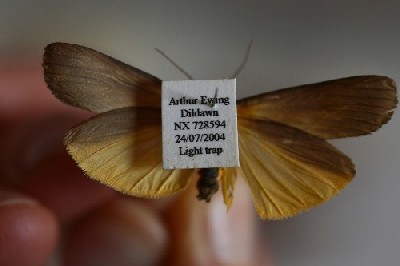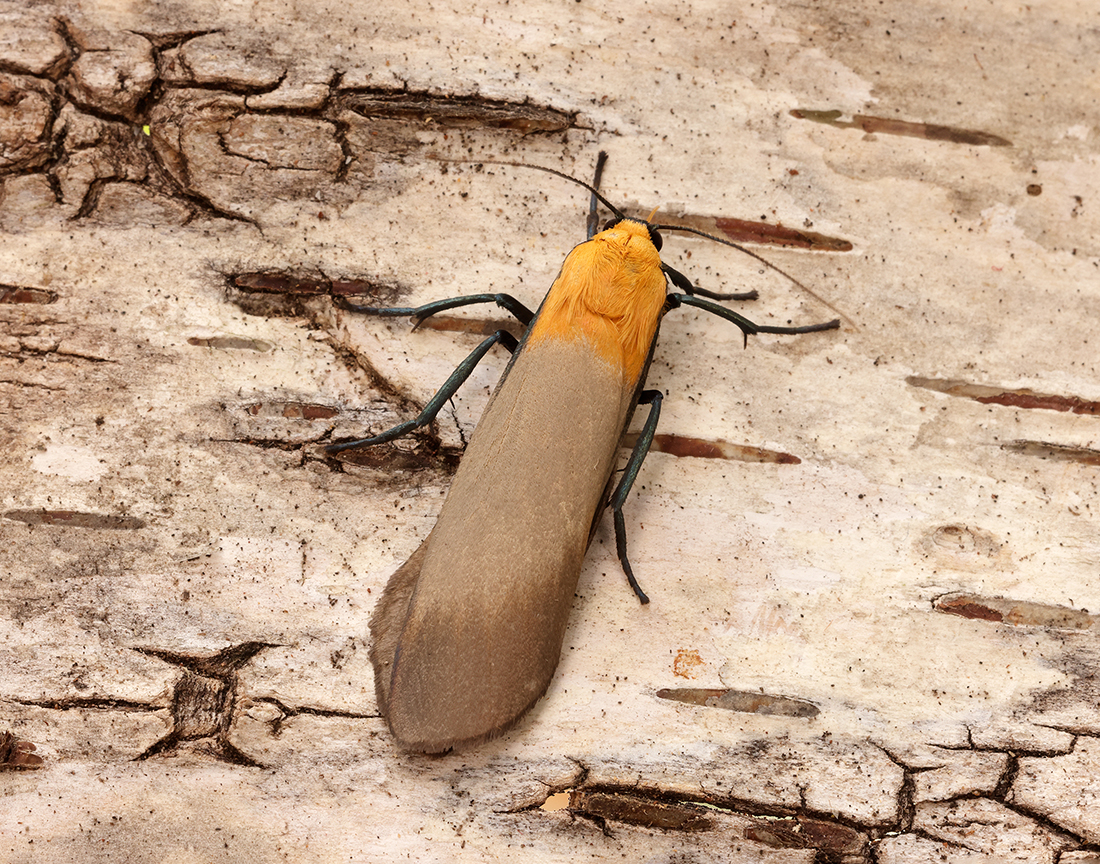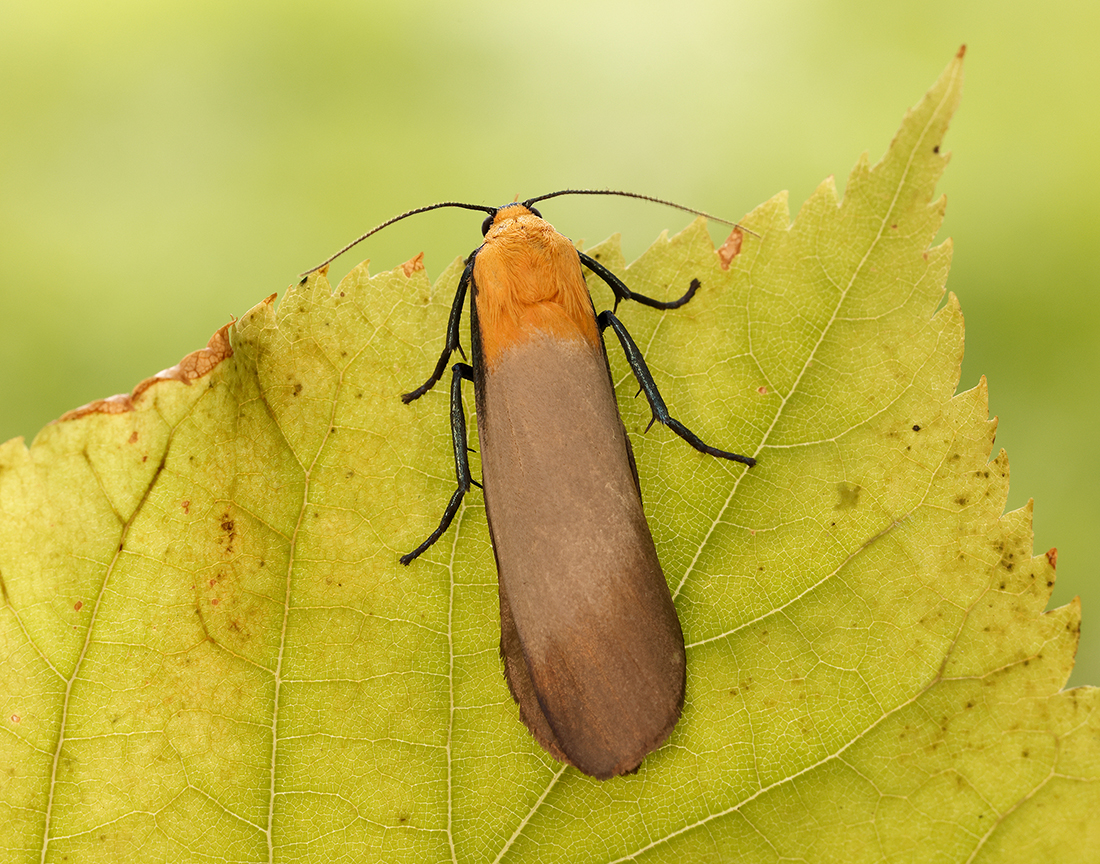This species is generally considered a migrant which can establish breeding colonies, sometimes short lived. A series of records at Blackcraig (VC 73) in 2021-2023 raises the possibility of local breeding.
Identification
Its larger size which is nearly twice the size of any British footmen, precludes any similar species. Only the female has the spots. Specimen or good quality photo required for record acceptance.
Recording Method
Attracted to light. Males greatly outnumber females for reasons unknown.
Life cycle
One generation July to September.
Larval foodplants
Dog lichen and other lichens and algae on oaks and other trees, and on rocks.
Habitat
Mature broadleaved woodland.
History
The first record for Scotland and Dumfries & Galloway was of one caught at light at Dildawn near Bridge of Dee on 24th July 2004.
The next record occurred on Forest Moor at MV light on 24th July 2006 when two were caught by the same observer.
